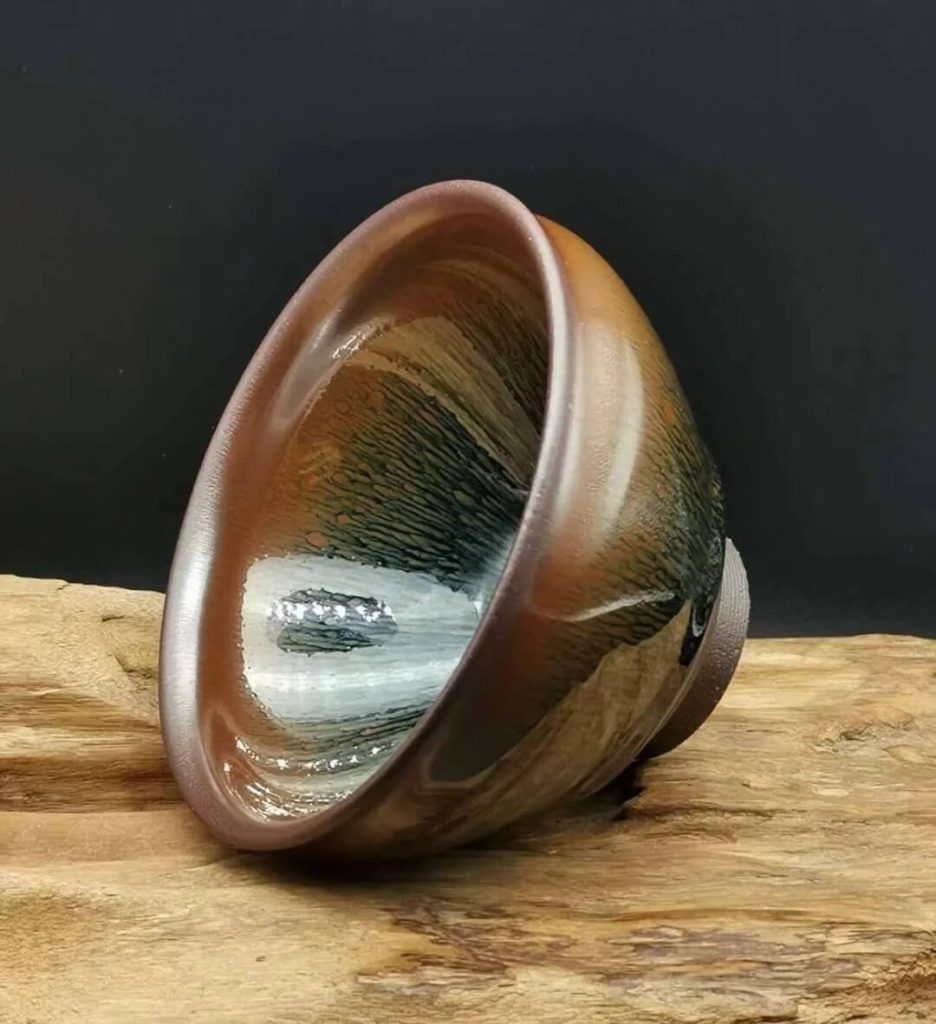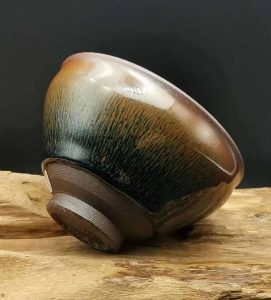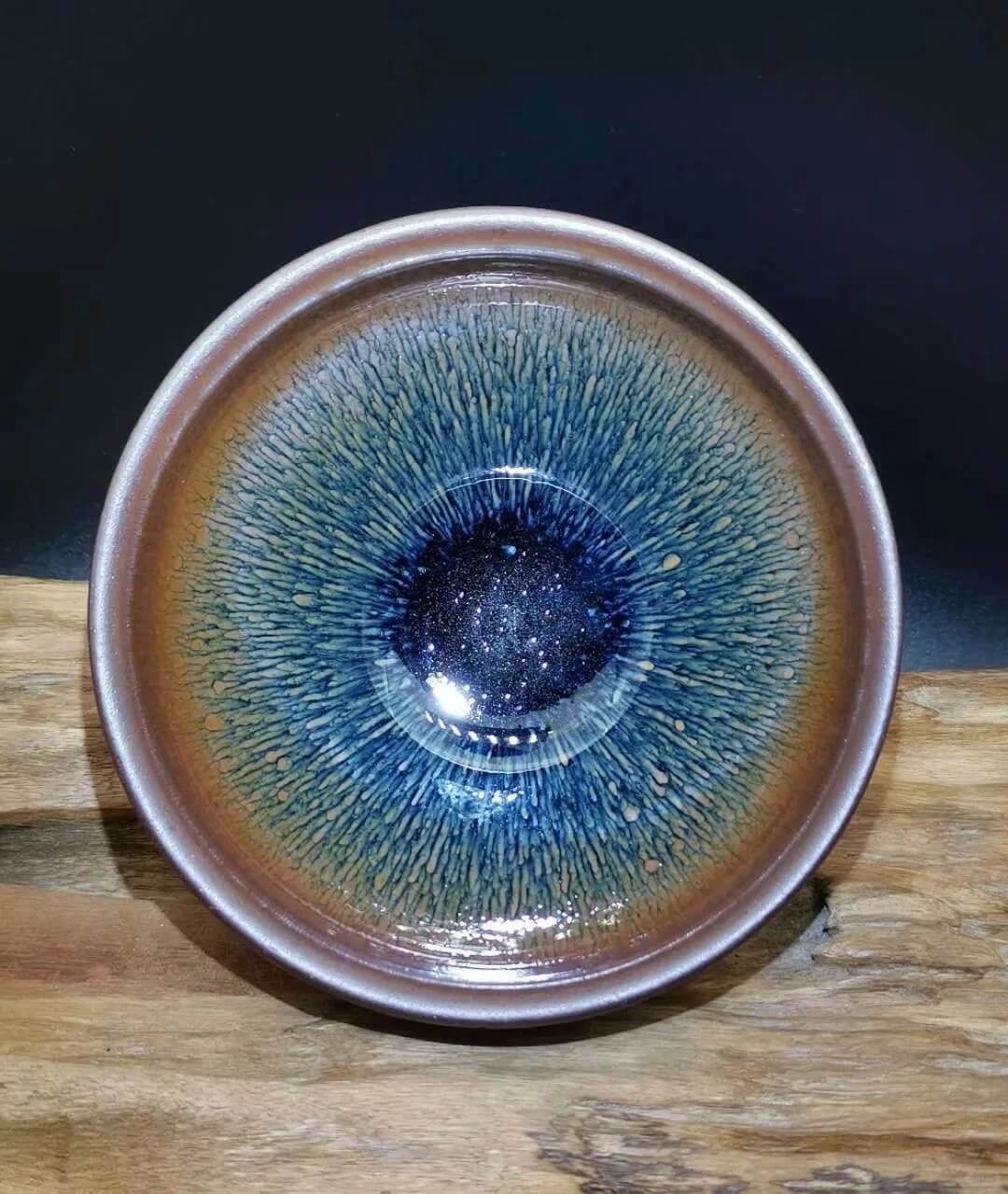Contents
The Meaning of “Rabbit Hair” in Jianzhan Tianmu
“Rabbit hair” or 兔毫 in Chinese, refers to the distinctive, fine streaks that appear on the surface of Jianzhan Tianmu bowls. These streaks resemble the soft, silky fur of a rabbit, which is how the term originated. The pattern is created through specific glazing techniques during the production of Jianzhan, where an iron-rich glaze forms crystalline structures that mimic rabbit fur.

Formation of Rabbit Hair Patterns
The creation of rabbit hair patterns involves a complex interaction between the glaze’s composition and high firing temperatures. The iron-rich glaze undergoes chemical reactions that lead to the crystallization of iron oxides, resulting in the characteristic silky lines. These lines can vary in color from black to brown, with their clarity and fluidity being highly prized by collectors and connoisseurs of Jianzhan.

Cultural Significance
In Chinese tea culture, the rabbit hair pattern holds significant value. During the Song Dynasty, Jianzhan bowls featuring these patterns were highly sought after for both their aesthetic appeal and functionality in tea ceremonies. The contrast between the dark glaze and the white froth of tea enhanced the visual experience, which was an essential aspect of cultural and social life during that era.
Variations and Rarity
There are several variations of the rabbit hair pattern, including “gold rabbit hair,” “silver rabbit hair,” and “blue rabbit hair,” distinguished by their color and clarity. The most valuable examples are those with fluid and clear patterns. The rarity and beauty of these patterns have made Jianzhan with rabbit hair designs highly collectible, maintaining their artistic and historical significance today.







